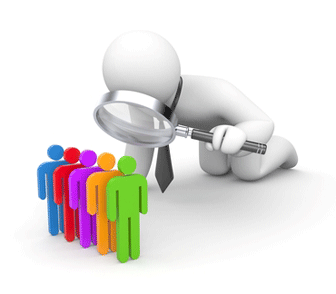The intensive development of the economy today is accompanied by competition between different manufacturers. The victory in this rivalry remains with those companies that most efficiently use the available resources, including labor. Labor force acts as one of the most important factors of production. The state of labor reserves and their competent use has a direct impact on the results of economic activity of economic entities. In this regard, issues related to staff composition are becoming relevant. We consider them further in detail. 
The concept and classification of personnel
Within the framework of a market economy, the law of consumer demand applies. It has a significant impact on the state of labor reserves and their development. The ratio of "supply / demand" makes it possible to replenish the personnel of the enterprise in a specific time period. The need for labor is affected by state regulation of labor relations. The main instruments in it are the constitutional right to education and work. State regulation provides:
- Minimum wage level.
- Regulated duration of work and rest.
- Various public guarantees.
The company's team is divided into qualification, professional and social groups and layers. They participate in the production of the final product or influence its volume to one degree or another. In this regard, the so-called "core" can be distinguished within the collective. This part of the staff provides the bulk of production. As such a "core" may be the most stable group from the entire state. In particular, it may include employees who have the greatest experience in the company or who have the highest qualifications. Personnel as a whole are all employees who perform production or management tasks and process objects of labor. The company staff may include both permanent employees and other able-bodied members of the company, invited to the company in accordance with a short-term contract. Thus, in modern conditions, citizens employed in the company should include all employees, owners, whose potential corresponds to production and helps to ensure efficient economic activity. General classification of enterprise personnel is carried out according to functional, technological and vocational qualification criteria. 
Labor resources
This category includes men from 16 to 59 and women from 16 to 54 years old inclusive. The exception is citizens of a specified age if they are:
- Disabled disabled WWII and labor 1, 2 gr.
- Persons receiving a retirement pension on preferential terms.
The labor force of the enterprise should include the entire totality of employees and owners who invest their abilities, skills, knowledge, money savings in the implementation of the economic and financial activities of the company. The working potential must be consistent with the production to ensure high rates of economic activity of the subject.
Classification and staff structure
Labor resources act as an object of regulation at the level of a company, industry, region, state. Frames are considered the main element of the system.They can simultaneously be both a subject and an object of control. The latter category of workers can be attributed to the fact that they act as part of the production process. Personnel are the staff of the company. The general classification and composition of personnel provides for the division of employees into 2 groups. Consider them. 
Workers
The classification of the organization’s personnel is necessary for calculating salaries, coordinating labor results with the performance of the production process. Workers are directly involved in the manufacture of wealth. In addition, they carry out repairs, transportation of goods and passengers, provide various services. Workers fulfill their tasks in material production, in the conditions of which physical labor predominates. They provide the manufacture of products, their service, exchange, implementation. The classification of personnel involved in production provides for the division into:
- Main workers. They are mainly engaged in direct output.
- Auxiliary workers. This part of the staff operates in service and procurement workshops.
The result of the labor of workers is goods in material form (clothing, food, furniture, household appliances, structures, vehicles, and so on).
Employees
The managerial staff carries out its activities during the administration in the conditions of the predominance of mental labor. The tasks of employees include processing information. This is implemented using technical means. The main result of the activities of employees is:
- A study of managerial problems.
- The formation of new information.
- Correction of the form and content of information.
- Preparation of administrative decisions.
After the manager selects an effective option, employees carry out its implementation and control over execution. The classification of personnel engaged in administration involves the separation of employees into:
- Specialists.
- Leadership.

The last group includes employees who are superiors structural units and the whole company. These include, in particular:
- Directors.
- Head of.
- Chief specialist (chief accountant, chief mechanic and so on).
- Deputies of relevant posts.
Specialists include workers engaged in engineering, technical, economic and other activities (economists, accountants, mechanics, engineers, and so on).
Separation Specifics
The classification of management personnel is carried out according to certain criteria. They make it possible to distinguish some workers from others. The essence and classification of personnel suggest the competent distribution of the company's labor reserves. The scale of the company may be different. The larger it is, the more extensive the network of employees will be. The fundamental differences between managers and specialists are the legal right to make decisions and the presence of other employees in the subordination.
Administration
The classification of personnel related to management provides for their separation into linear and functional employees. The former are responsible for making decisions on all administrative functions. The second implement separate management tasks. In addition, another classification of personnel is provided. She, in particular, involves the appointment of managers of higher (director with deputies), middle (heads of departments and workshops), lower (masters, foremen) levels.
Specialists
These employees are divided into three groups according to the results of their activities:
- Functional employees. The result of their work is management information. These include accountants, marketers, financiers, economists, referents and others.
- Specialist engineers.The result of their activities is expressed in design or engineering and technological information in the field of production technology and equipment. Such workers include builders, designers, designers, technologists and others.
- Technical specialists. These employees prepare and draw up documentation, keep records and monitor business services. These employees include waiters, typists, couriers, storekeepers, elevators, operators and others.

Separation by professions and specialties
This is one of the most important areas in which the classification of enterprise personnel is carried out. A profession is a type of activity, for the implementation of which it is necessary to have a set of relevant practical skills and theoretical knowledge. A specialty is, to one degree or another, a narrow variety of labor within the framework of a profession. These signs of personnel classification are of particular importance in attracting workers to certain industries. In each area of production there are specialties and professions that are unique to it.
Qualification level
The classification of personnel into categories is based on the ability of employees to carry out activities of one or another complexity. Qualification is a complex of specialized knowledge, as well as practical skills. They determine the degree of preparedness of an employee to perform professional tasks of a certain complexity. The qualification category is characterized by experience in a particular position, level of education. The company may employ different specialists. The staff may include employees:
- The highest category. Such specialists have academic ranks and degrees.
- The highest qualification. Such employees include employees with great practical experience and special vocational education.
- Middle category. These workers have some practical experience and relevant education.
- Practice. Such employees hold economic, engineering and other posts without special education.

Labor efficiency
Timeliness and the volume of work performed will depend on the degree of provision of the enterprise with manpower and the effectiveness of its implementation in production. The competent use of labor also ensures the efficient operation of machinery, equipment and mechanisms. The rational distribution of the industrial and industrial workforce acts as an indispensable condition that contributes to the uninterrupted production process and the successful implementation of plans.
Performance indicators
In the analysis of various aspects of the use of labor, various factors apply. The study primarily focuses on the security of the organization with the necessary personnel. For this, take into account the relevant indicators. These include, in particular:
- The structure and composition of industrial production staff.
- Security of the company and its divisions with administrative employees and other employees.
- Workforce movement.
- Provision of qualified staff.

Conclusion
The personnel structure is influenced by the characteristics of production, the scale and specialization of the processes. Thus, the specific gravity of one or another group of workers depends on the production system, the development of technology and technology. For example, increasing the organizational level contributes to the relative preservation of the number of employees and an increase in the number of workers in the state. The improvement of equipment, in turn, is accompanied by a reduction in auxiliary workers and an increase in key employees.The decrease in the number of workers can be assessed as a positive phenomenon if this was a consequence of an increase in the level of mechanization of production activity. An essential prerequisite for enhancing efficiency and increasing productivity is the stability of the staff.






